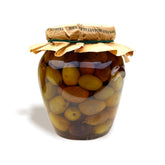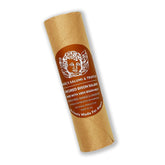What Are Truffles and Why Do We Love Them?
Truffles. Truffles are the epitome of a “you either love it or you hate it” delicacy, one that holds an unforgettably pungent and heady scent of fresh earth.. The truffle is one that takes center stage in any dish and can easily overwhelm the other flavors if overdone.
Truffles are edible fungi that are in the mushroom family. But, unlike other mushrooms, this one has a distinct taste. The flavor of a truffle can vary depending on the type of truffle, but the most notable flavors are earthy, nutty, oaky, umami, gamey, briny, and savory. Many would say the aroma and flavor of truffles are quite similar, so imagine the sweet scent of chestnut blending with black olives.
Those who are not quite as charmed by the truffle may describe it as being “musky” or perhaps “funky.” Regardless of how you describe the flavor, it is beloved by billions of people around the world for its unique, rich, and ambrosial flavor and aroma that enhance any menu item it is part of.
When truffles are in a dish, it’s nearly impossible to turn down the opportunity to experience their flavor once again.

What Makes Truffles So Special?
Truffles are, pound for pound, one of the most expensive culinary items you can buy. The steep price tag comes from the scarcity of the truffles. Truffles are seasonal produce, incredibly difficult to grow, and require years to cultivate. Furthermore, they have a notably short shelf-life – while they will technically keep for one to two weeks when properly stored, their aroma and flavor will deteriorate by half in about five days.
This finicky produce requires a highly specific environment in which to grow, one that has numerous oak trees. Even if all of the environmental conditions are perfectly aligned with the growing requirements of the truffles, they are still not guaranteed. Truffles do grow naturally in the wild (mostly woodlands), but hunting them is extremely labor-intensive and time-consuming. Hunting truffles requires digging each truffle out of the ground by hand, so as to to not damage the delicate meat of the truffle. Setting up a truffle orchard, on the other hand, can take up to six years before anything is able to be harvested – certainly not a “get rich quick” business.
To further clarify why truffles are so rare, let’s examine some facts about truffle cultivation and harvesting to better understand how the process correlates to truffles being an expensive culinary delicacy.
Producing Truffles
Truffles grow underground, knotted within the roots of a nearby oak tree. They are completely hidden to the people farming them, leaving no discernible clues as to their location beneath the soil. Adapting to the truffles’ elusive character, some farmers grow truffles in orchards of trees that are known to be ideal truffle hosts, such as oak or hazelnut.
That being said, even with truffle farms established solely for the purpose of cultivating and harvesting truffles, the growth of the produce is wildly unpredictable. Those who produce truffles have so far been unable to find an inherent pattern in truffle reproduction, which makes the cultivation and harvest of this luxurious fungus even more of a challenge.
When truffle farms need assistance finding the produce, professional truffle hunters are hired to uncover the location of any nearby truffles.
Hunting Truffles
Truffle hunters are animals that have been trained to detect the aroma of truffles growing beneath the ground so that the farmers may harvest and sell them. Assuming they do not keep a few of these delicacies for themselves!
Originally, truffle hunters were typically sows that were attracted to the scent of the underground truffles. But, over the years, truffle farmers have found some specific breeds of dogs to be far more effective at hunting truffles. The Lagotto Romagnolo is the most common breed of truffle hunting dog.
Why the change from truffle hunting pigs to truffle hunting dogs?
For one thing, dogs have more stamina that the typical sow. Second, dogs are much easier to train that pigs. And, three, dogs are less likely to devour that truffle the farmer spent time and money hunting down. Wrestling a tasty truffle away from a 350-pound hog isn’t exactly the easiest – or the safest – thing in the world.
Truffle dogs only scent and alert their handlers to the presence of truffles that are at peak ripeness, when the odor is strongest, leaving behind the still-growing, unripe truffles without disturbing them. After the truffle dog has alerted, the truffle farmer will use a rake to turn the soil and pick up the truffles they find. To make things even more challenging, black Oregon truffles frequently produce multiple times during the year unless they are excavated with a rake early in the season.
Truffle hunting positions the produce as a culinary delicacy, as the process of harvesting the truffles is considerably difficult. Truffles require a very specific method of hunting for them in order to be found and harvested. Furthermore, truffles are inconsistent and without a natural pattern in their growth, making them very rare and hard to find even when using trained truffle hunting dogs.
Climate Change Affecting Truffles
Just as all of the natural flora and fauna of the world is in jeopardy from the adverse affects of climate change, truffles are no exception. As the woodlands decrease in size and number, and general global shifts occur from climate change, the quantity of wild truffles has plummeted and continues to drop each year.
From the turn of the 19th century, truffle production in France has fallen from a production of more than one thousand tons of truffles harvested per season to a mere thirty tons harvested. Those who love this earthy delicacy will be saddened to learn that the continuing climate change could potentially signify the complete loss of truffles in the future, even with the unwavering desire to grow them.
Pricing Truffles
Fresh truffles vary in price, depending on the supply and the demand at the moment of purchase, the truffle species, and the quality of the truffles. The price of truffles also depends on whether the customer is purchasing the produce at retail or wholesale price, such as for their own personal use (retail) or for use in a restaurant (wholesale). White truffles that are grown in Northern Italy, for instance, are the most expensive of all truffles and they have a much more robust, deeper aroma.

The Next Best Thing to Fresh Truffles: Truffle Oils and Truffle Butters
Considering the price of fresh truffles, one of the best ways to enjoy truffles without straining your bank account (especially if you’re keen on that white truffle) is truffle oil. You want to be certain that the truffle oil you are buying is made from real truffles, rather than being artificially flavored truffle oil.
Add a splash or two of some truffle oil to your next meal as you cook, and you will find it goes a long way with a heady earthy scent. Even if your budget only allows for a smaller bottle of truffle oil, it is absolutely worth every cent and it will last.
While truffle oils and truffle butters, both white truffle butter and black truffle butter, are most commonly used to finish a pasta or a risotto, they can also add savory depth to steak-frites, eggs, or even a grilled cheese sandwich!
Preserving and Consuming Truffles
Once you have acquired your truffles, they must be carefully preserved in order to keep their renowned flavor and aroma.
Preserving Truffles
As previously mentioned, fresh truffles have a short shelf-life following harvest. When stored properly, they will last for up to two weeks. Without proper storage, however, they lose their prized aroma and flavor after just five days.
To preserve this taste and scent, store fresh truffles in a cool, dry place. The refrigerator is perfect for storing truffles. Remember: Moisture is the sworn enemy of truffles.
If you store the fresh truffles wrapped in unbleached paper towels, moisture will be kept at bay. Just be sure to change the paper towel wrapping on a daily basis.
Consuming Truffles
There are several ways to enjoy truffles, whether that they are fresh truffles or in truffle oil or as truffle butter. Black truffles are best consumed cooked because the process of heating the truffles releases the rich flavor and aroma. Place thin slices of fresh black truffle underneath the skin of uncooked poultry, such as turkey, duck, or pheasant. For the ultimate flavor pairing, add sliced fresh truffles to foie gras preparation.
Black truffles also pair very nicely with many other meats, such as Berkshire Pork, Venison, and Wild Boar. Add them into a sauce made with hearty wine or brandy to enhance any dish. Pasta and Risoto made with black truffles are incredible.
Both white truffle butter and black truffle butter make for the perfect, aromatic alternative to your standard butter. Eggs made with truffle butter is a popular, but simple, dish to prepare for breakfast. Enjoy fresh white truffles either shaved or grated raw over your pasta, risotto, meat, or fish. Avoid cooking white truffle, as it will lose considerable flavor intensity.
Nutritional Benefits of Eating Truffles
Rich aroma and flavor aside, truffles have several nutritional benefits that only provide further reason for them to be globally coveted. Truffles provide a long list of nutrients the body needs, such as protein, amino acids, carbohydrates, and healthy fats. Additionally, truffles contain antioxidants and anti-inflammatory, antibacterial, antitumor, and hepatoprotective properties.

The Different Types of Truffles
Truffles are considered a culinary luxury due to their rarity, nutritional benefits, and short shelf-life. The rarity of certain varieties of truffles also varies in accordance to the type of truffle you are looking for.
Australian Perigord Truffles
The Tuber melanosporum, also commonly known as the Australian Perigord Truffle and the Black Winter Truffle,, is considered to be the diamond of any kitchen around the world. The Perigord truffle, named for the region in France where these truffles are most commonly harvested, are native to Europe but can also be successfully grown in other places, like Australia. The Perigord truffle is highly prized for its unique and heady scent.
The Australian winter parallels the summer in Europe and in the United States, making it possible to enjoy genuine, fresh black winter truffles on the hottest days of the year! Aromas of fresh earth, damp woodlands, chocolate, and molasses are waiting to greet you.
Australian Perigord Truffles have a distinctive, dark exterior patterned with large pyramids, and a marbled chocolate or gunmetal grey coloration on their fleshy inside when ripe.
Black Summer Truffles
The Black Summer Truffle, or Tuber aestivum, grows tucked away beneath the earth’s surface in open woodlands, a presence usually denoted by the lack of green vegetation under the trees. While most commonly found in France, the Black Summer Truffle, can actually be found in abundance throughout all of Europe.
Black Summer Truffles have a black and coarse exterior skin, but they should not be confused for the Black Winter Truffles. They may be fungi, but they not fungible. Black Winter Truffles, or the Australian Perigord Truffles, are considered to be a superior variety of truffle to the black summer truffle.
Black Summer Truffles have a lighter inside, with a flesh coloration that can be anywhere from white or cream to light or dark brown, depending on what stage the season is currently in. These truffles become darker as the season progresses.
The market price of truffles changes annually and retail prices change weekly, but for context: The price of Black Winter Truffles is generally two to four times greater than the price of Black Summer Truffles.
It’s not all about the appearance, either. More importantly than the visual difference is the fact the aroma, flavor, and texture are all entirely different from either the Black Winter Truffles or the White Winter Truffles. They also weigh much less than the other varieties, which lowers their price. The Black Winter Truffles are very earthy, umami-like truffles that hold notes of dark chocolate. In contrast, White Winter Truffles (Also known as Alba Truffles) are highly pungent and smell of garlic, with strong notes of aged cheese.
Black Summer Truffles may not have that famous truffle flavor so many people are crazy about, but they do offer a unique taste and aroma of their own. Beauty is always going to be subjective, and that holds true for truffles as well.
Are you just a big fan of truffles, curious about the differences in flavor as the seasons change? Are you a curious foodie? Then you certainly want to try some fresh black summer truffles!
Do you just want to enhance an otherwise quite-typical pasta with truffle flavor as you binge movies on Amazon Prime on Saturday night? Black Summer Truffles may not necessarily help you achieve that goal, but you can with a Black Truffle Oil or a White Truffle Oil. On their own, black summer truffles offer a soft, sweet, and buttery flavor and aroma profile with bold notes of almonds and hazelnut.
Burgundy Truffles
Fresh Burgundy Truffles, botanically known as Tuber uncinatum, are one of the most prevalent truffle species in all of Europe, and are a member of the Tuberaceae family. Burgundy Truffles have a rough, chocolate-colored exterior patterned with large diamond-shaped peaks. The flesh of a fresh Burgundy Truffle is deeply veined and coffee-colored. This is an Autumn truffle species, one that carries an earthy hazelnut flavor. The Burgundy Truffles are not as pungent as the Black Winter Truffles, but they are still more fragrant than the Black Summer Truffles. This is likely due to them having more time spent growing underground. Fresh Burgundy Truffles are foraged in France and Italy.
Fresh Burgundy Truffles are considered an excellent ingredient to use in lieu of the more expensive, rare Australian Perigord Truffles. Known as Truffe de Bourgogne in French, this type of truffle is harvested by hand throughout Europe within a very specific timeframe that spans from September through January. The Burgundy Truffles are restricted to this timeframe because of the release of the Black Summer Truffle.
Many feel the Burgundy Truffles are merely the Autumnal version of the Black Summer Truffle, as the differences between the two types of produce are entirely ecological – those that come from climate and terroir differences and changes. Despite having a similar structure, the two types of truffles are set apart in commercial markets to keep confusion at bay as much as possible. Additionally, they are also separated with distinctly different names due to the slight flavor variation, with the Fresh Burgundy Truffles holding a flavor and aroma that is far more bold.
White Alba Truffles
The Fresh White Alba Truffle, or Tuber magnatum, is found in Northern Italy, where it is harvested in the fall and early winter. White Truffles only grow a few inches underground, thriving best when tucked in close to the roots of hardwood trees such as oak, hazelnut, and chestnut. White Alba Truffles have a golden, knobby exterior with a firm, delicately tan or beige flesh.
While all types of truffles are highly valued and sought after, it’s the White Alba Truffles that are the most coveted for their unforgettable flavor. White Alba Truffles taste earthy, pungent, and musky, yet also a slight bit spicier and more robust with bold notes of garlic. While Alba Truffles should never be cooked, as the heat will destroy the flavor.

Where to Buy Fresh Truffles and Truffle Oils
While truffles may very well seem like any other type of produce, they’re actually a highly prized culinary ingredient often named The Diamond of the Kitchen. This title is due to the truffles’ rare and unique growth, decadent flavor and aroma, long list of nutritional benefits, and the difficulty their harvest requires.
But, now that you know what truffles are and why truffles are so special, wouldn’t you like to know how you can get some fresh truffles or truffle oils on your own?
At Angel’s Salumi & Truffles, we receive our precious shipments of truffles straight from Europe. They are sold as whole pieces, after they have passed rigorous olfactory and visual inspections. You can shop for your truffles, truffle salts, truffle oils, and truffle butters right in the store or online today!
To get the most out of your truffles and truffle products, check out our subscription boxes and then stop by Angel’s Salumi & Truffles to buy some truffles while they’re still in season!






